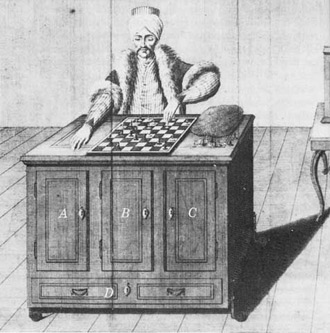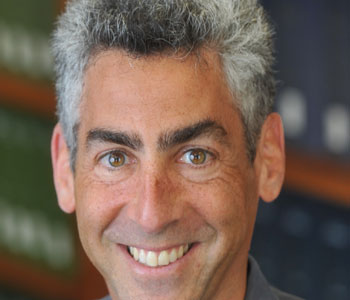Minsoo Kang
Sublime Dreams of Living Machines: The Automaton in the European Imagination
Harvard University Press
386 pages, 9¼ x 6¼ inches
ISBN 978 0674049352
Sublime Dreams of Living Machines is about the millennia-long fascination in the West with the self-moving machine that mimics living beings, better known today by the word “robot.”
There are works that deal with specific issues of robotics or episodes in the history of automata. But this book presents a comprehensive history of the life-imitating machine as both a thing and an idea.
Readers may be surprised that my story does not begin with high-tech devices of the modern era but in the ancient world, when inventors like Hero of Alexandria already designed moving figures of humans, animals, and gods.
The narrative then moves to the Middle Ages when people told legends of a speaking head that could utter prophesies, to the age of Enlightenment. There was a veritable automaton craze in the eighteenth century. It was set off in the 1730s by the French mechanic Jacques de Vaucanson who displayed two automaton musicians as well as a duck that could flap its wings, move around, take food, and even defecate.
The last chapters take the reader to the modern era when the Industrial Revolution and the technological warfare of World War I aroused terrifying nightmares of machines rising up against humanity.
Sublime Dreams of Living Machines also deals with scientific and philosophical ideas that have been suggested by the automaton. Most importantly, I tackle the question of whether human beings can be described as machines. If so, what kind of a machine are we? If not, what makes us fundamentally different from a machine?
My larger purpose is to demonstrate that the automaton has been, and remains to this day, one of the central ideas in the Western imagination.
The automaton was utilized by some of the greatest thinkers, writers, and artists to ponder essential questions about the very nature of the universe, the state, and humanity. The philosopher René Descartes thought that a human being was an automaton built by God, with a nonmaterial soul residing in the brain—but he considered animals to be pure organic machines with no souls. Wolfgang von Kempelen’s so-called chess-playing automaton of 1770 beguiled both Europeans and Americans with its performances.
The book includes detailed analyses also of the view of modern machines as living creatures in the imagination of modernists—writers and artists like the surrealist Raymond Roussel, the futurist F. T. Marinetti, and the expressionist George Grosz.

I tackle the question of whether human beings can be described as machines. If so, what kind of a machine are we? If not, what makes us fundamentally different from a machine?
A major aspect of the West’s fascination with the automaton is that the interest in the object is an ambivalent one. The delight, amusement, and amazement that people experience in the face of the self-moving, life-imitating machine are mixed with a sense of unease that can be magnified into full-blown horror under certain circumstances.
In our time, scientists and engineers regularly present the latest breakthroughs in robotic and computing technology to great public approbation, but people also flock to see movies like the Terminator series and the Matrix series and TV shows like Battlestar Galactica that feature cataclysmic conflicts between machines and human beings.
I point out that there are three distinct views that can be found in contemporary culture on the fate of humanity in the age of advanced machinery, ideas that I call “inevitable conflict,” “equivalence through sentience,” and “cybernetic mergence.”
The first one, “inevitable conflict,” features the familiar prophesy of the coming war with robots. The history of this idea actually goes back at least to the mid-nineteenth century. Reading Darwin’s Origin of Species gave the Victorian writer Samuel Butler terrifying visions of machines evolving to challenge their creators.
The second view, “equivalence through sentience,” does not see such a conflict as inevitable as it imagines the possibility of peaceful co-existence in the future of humans and artificial creatures that have been granted the rights and dignity of conscious beings (perhaps the best way to prevent a destructive confrontation).
And the third view, “cybernetic mergence,” posits that in the future humans will be using so many artificial implants and will be capable of interfacing so seamlessly with intelligent machines that the very distinction between what is natural and artificial will become meaningless.
These ideas are only the latest expressions of what I believe is a much more fundamental and visceral ambivalence we feel before the automaton.
When humans beings organize reality into a coherent worldview, we tend to divide everything into a series of opposing binaries, like day–night, light–dark, inside–outside, man–woman, adult–child. But it can be highly disturbing when an entity appears, or an event occurs, that disrupts such distinctions—e.g., a solar eclipse violates the day–night binary, a hermaphrodite the man–woman binary.
One such fundamental distinction that we take for granted is the clear difference between living beings and dead objects. The automaton, as an artificial thing that acts as if it were alive, seems to violate that distinction.
I explore this issue in the first chapter of my book—the automaton as an essentially fascinating and disturbing object for its ability to traverse the boundary line between the worlds of the organic and the inorganic, the natural and the artificial, and the living and the dead.
I came to the subject of automata when I was in graduate school at UCLA, studying to become a historian of the Enlightenment. While doing research on the ideas of some of the most radical thinkers of the second half of the eighteenth century, I kept coming across references to Jacques de Vaucanson, whom I had never heard of before.
What struck me immediately was the fact that some of the greatest minds of the period, including Voltaire, Diderot, La Mettrie, and Mercier, kept referring to him as a true genius of their time. When I looked into the figure of Vaucanson, I was surprised to find out that he began his career as an automaton maker, of the flute-player, the fife-and-drum player, and the famous defecating duck.
As I then discovered that his works were a great success among intellectuals as well as the general public, I knew that I had a fascinating historical puzzle to solve.
I subsequently came up with the theory that Vaucanson’s automata were so popular because they represented the entire mechanical order of the universe, the state, and humanity that rationalist thinkers have been describing since the beginning of the Scientific Revolution.
So this research into Enlightenment automata opened up the entire history of the self-moving, life-imitating machine that goes back to the dawn of Western civilization and is still in progress today. And in my research, I was fascinated by how rich and varied the entire history of automaton symbolism has been in the course of European history.
A full volume can be written on the subject of each chapter of my book. In fact, it is my hope that my work will serve as a catalyst for other scholars.
Wolfgang von Kempelen's Chess-Playing Turk, 1770

In the last weeks, I received many queries about my book due to the IBM computer Watson winning on the game show Jeopardy! over two (human) champions. I was asked about such issues as our ambivalent attitudes toward such devices as well as our hopes and fears about our fate in the age of intelligent machines. But I was also questioned about a specific eighteenth-century automaton, the so-called chess-playing Turk that was the invention of Wolfgang von Kempelen.
A mechanical figure dressed in Turkish costume sat behind a box with a chessboard on top, and played against human chess players by moving pieces with its fully articulate arm.
I discuss the object at some length in the book, on pages 174—183, much of it debunking false information that is out there about the object.
And it is somewhat ironic that the book’s cover shows a detailed illustration of the Turk-machine as I pronounce the thing to be a “false automaton” (though the fact that a lot of people referred to it as an automaton makes it an important subject of chapter 4).
I also had to defend the reputation of Kempelen from charges that he was a fraud and that his invention was a hoax. The Turk was first performed in 1770 in the Viennese court of the Habsburg monarch Maria Theresa. It was the taken on a tour all across Europe, winning matches against some of the greatest chess masters of the time, and igniting the imagination of all those who saw it perform or heard of its performance. After Kempelen’s death, its new owner took it to the United States where the Turk was also a huge success, inspiring Edgar Allen Poe to write two essays about the device. It was destroyed in a fire in 1854.
As I read through numerous contemporary writings on the Turk, it became clear to me that with the exception of a gullible few, nobody thought that the thing was an actual chess-playing machine. Kempelen never claimed that he had created one. Pretty much everyone knew that the Turk was a piece of trickery and that Kempelen was issuing a challenge for people to figure out how he perpetrated the illusion that he had constructed a chess-playing automaton.
Given that a lot of people were involved in the trick—read the book to figure out how Kempelen did it—it is a wonder that no one let the cat out of the bag until fairly late in the day. So the story is not about an actual automaton that could play chess, but about the cultural and intellectual reaction to the very idea of a thinking machine—despite the common awareness that such a thing was beyond the technological capabilities of the time.
It did, however, inspire Charles Babbage (the pioneering designer of the early computers, the Difference Engine, and the Analytic Engine) who considered the possibility of a true game-playing machine after he played a match against the Turk. So there is that historical connection between the trick chess-player of the eighteenth century and the real game-players Deep Blue and Watson of our time.
In 1893, the American writer Ambrose Bierce published a short story called “Moxon’s Master” about a chess-playing automaton that kills its creator after it is defeated in a match. This is a significant story in that this may be the first time someone wrote a story of a machine literally and intentionally killing a human being (to anticipate an objection—Frankenstein’s monster was not a machine in the original Mary Shelley novel, so not an automaton).

The delight, amusement, and amazement that people experience in the face of the self-moving, life-imitating machine are mixed with a sense of unease that can be magnified into full-blown horror under certain circumstances.
The fascination with the automaton in the West can be described as an obsession in that it is persistent, repetitive, and charged with powerful and contradictory emotions. And the best way to dissolve the power of an obsession is to get to the bottom of its origin and essence as well to understand how it has affected the lives of those who have lived under its sway.
When I was asked how I felt as I was watched Watson beat its human competitors on Jeopardy!, whether I was concerned or fascinated, I answered that I felt both. And I imagine that most people had such double reactions as well.
In the book I have tried to account for why we feel such contradictory emotions when we encounter the self-moving, life-imitating machine—amusement, delight, and wonder, as well as anxiety and horror.
And I show how the interplay of such feelings were articulated in very different ways throughout European history—from the concern over legitimate and diabolical magic in the Middle Ages, the question of human beings as machines or not in the Enlightenment, and the vision of human mechanization as that of both empowerment as well as emasculation in the modern era.
When people talk about what will become of humanity in the age of intelligent machinery, they speak of future events as if they are already beyond our control. As if the destructive confrontation with autonomous machines, for instance, will happen to us no matter what we do.
It is my highest hope that a general history of humanity’s attitude toward the automaton will inspire people to see that the future can be made according to how we decide to deal with our own emotional attitudes toward our fast-growing creations.
It is not too late for us to decide what kind of a future we want to have with our artificial offspring—and start making decisions that will bring about such a future. The first step toward gaining that control is to understand the historical nature of the millennia-long dream of living machines.




We don't put paywalls. We don't distract you with ads. We don't sell your data.
Please help to keep this running!